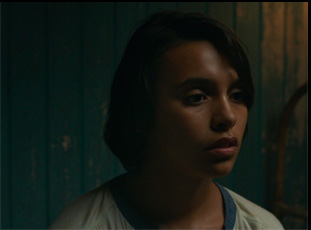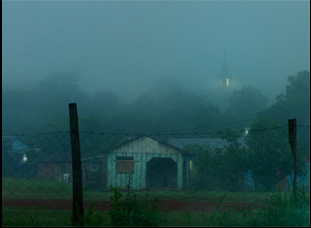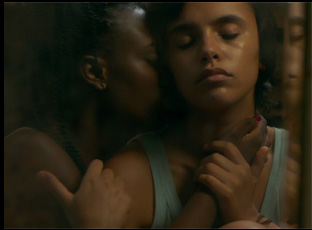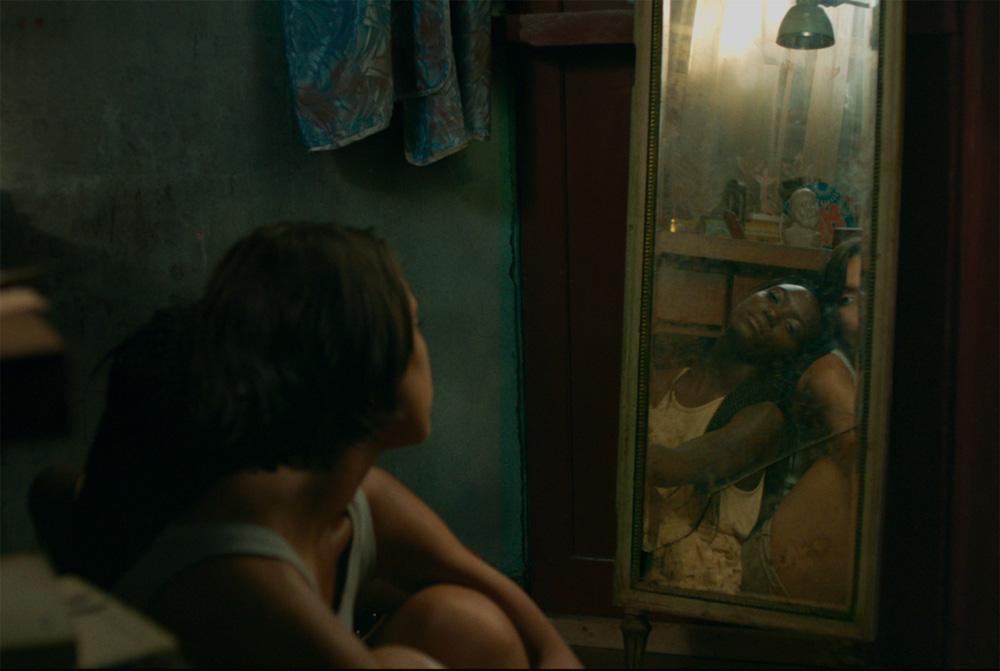In order to make one of the central metaphors of her debut feature “To Kill the Beast” work, Agustina San Martín found that she actually had to tame a beast first, inviting a bull to the set for what would be a wild day of filming.
“The bull did what the bull did and the camera had to hit its marks,” San Martín recalls of who was directing who that day. “The camera guy was someone that we brought from another province because it was a very specific task and we had to do it so many times, you have no idea. But the bull behaved quite well.”
Surely, the bovine would learn as an audience does that San Martín has a way with unruly creatures, taking the combustible coming-of-age tale of a young woman named Emilia (Tamara Rocca) and making sense of her fractured experience, brought to a South American border town by the death of her mother and the subsequent disappearance of her brother Mateo. Upon her arrival at the house of her eccentric aunt Ines (Ana Brun), Emilia learns she isn’t the only one in looking for something as local rumor has it that the spirit of an evil man has taken on the form of an animal to terrorize the community, leading the local church to start a search party and while Emilia doesn’t buy into their nonsense, the specter of their canvassing the nearby fields might as well reflect what’s going on in her head as she’s scraping for clues as to her brother’s whereabouts and finds herself attracted to a paying guest (Julieth Micolta) at Ines’ home while her boyfriend in Buenos Aires continues to leave her affectionate text messages.
While Emilia may seem as if she’s living on the edge in numerous respects, not quite feeling as if she fully belongs anywhere whether it’s between cultures or sexual orientation or where her place is within her own family, San Martín shows how she starts to find certainty in who she is without measuring herself against others, with the film’s fragmented structure gradually coalescing and turning the land once dominated by an oppressively aching sky and the fog that rolls over the town into terrain in which she can carry herself with confidence. San Martín already knew a thing or two about bringing various elements together into a more powerful whole as an artist, skilled as both an accomplished director of photography and colorist in addition to sharpening her talent as a writer/director on internationally acclaimed shorts such as “Swedish Cousin” and “Monster God.” While her feature debut is making its world premiere at the Toronto Film Festival this week, she spoke of how some good fortune, patience and prowess combined to create such a bewitching portrait of a character and a place, as well as her adventures in the editing room and how her prayers were answered when it came to casting.

I was interested in telling this story about the sexual awakening of a teenage girl and how that was her tool to confront things and learn how to inhabit the world by the strength that the sexual awakening gives her. I wrote it when I was 21 and now I’m 30, so I like to say that I had the coming of age while was starting to grow, so it changed a lot and I would be updating the film as I grew up and started to view things differently, but then in one moment, I just needed to commit myself to one specific view. That was quite a decision to move forward even when I was still changing that this is going to be a movie of this moment.
Was this location always in mind? It says so much about the story itself.
It’s a real town on the border of Argentina and Brazil, and most of the people speak a mixture between Spanish and Portuguese. There are TV channels, some of them are from Argentina and some of them are from Brazil and [there’s] Argentinian and Brazilian food, so it’s like this middle of nowhere. You come back from one way to another all the time and this place was always very fascinating to me. It has a very weird energy, so I wanted to show that.
Did you want to shoot at a particular time of year? The climate appears to be such a part of it.
I wanted to shoot in the summer, even though that’s a very warm place, because I wanted all the sweat possibilities with the least amount of rain, even though it was a little pain in the ass to have this whole team in this extreme weather making the film. We had to manage that accordingly, but it was exactly perfect for in front of the camera.

I’ve always really liked being very baroque with the elements, and making movies, I was like the more the merrier, so I didn’t doubt having all this intention with the image and also with the sound. I really wanted to punctuate the fantasy with this. There was always an intention of having this dreamy/fantasy-ish, mystic landscape and this cyan light. We tried to find and create mist all the time, but because we had such a low budget, the mist machines were very small, so the mist was like [mimes spritzing], so I already knew we were going to have to build a lot of things in post [with] VFX, mostly the mist and then when we started in VFX, other things started appearing like, “Okay, wouldn’t it be nice if there was some warm light in the middle of the street behind the…” and it’s like, “Yeah, let’s do this.” So we started getting excited about it, but the main essence of those shots, we built up prior.
You’ve said Gregorian Electronic music was an inspiration. How did it shape your thinking towards the film?
For the music, we worked with O Grivo, our Brazilian composer because there is all the scenes about the sexuality of [Emilia] and this myth appearing and usually all these myths in these little towns are from very religious towns [where] a beast that takes girls, and it’s something they say for girls to behave or listen to their parents. With [Emilia] having this lesbian sexual awakening, it was very important for me to have a church and the presence of a religion to put the line for her because they’re looking at a girl, but she’s listening to religious music, so I wanted there to be a little confusion for her. That’s where all these organs came from.
How did you get Tamara involved as Emilia?
We did a lot of casting and we just couldn’t find her. Actually, I’m not quite a believer, but there is a little saint in Argentina and I went to his place and gave him a wine and Tamara appeared the next day, so I was like woooo. [laughs] So I gave him another wine just before filming. And she came very raw, very young to the casting, but I couldn’t stop looking at her. At the end of the day, I believed that magnetism was going to translate in the movie and that the wiser choice was to truly choose somebody that magnetized me like that.

All the time, but not only with the actress because I could communicate very clearly with her what we were doing, but in the editing room, the movie suddenly is like an untamed animal and you’re like, “Oh, I just created a monster.” And you have to tame it and make sense out of it. That’s when I started to realize that the movie had its own autonomy and it’s not necessarily this perfect universe in which you have an idea and you go and you shoot it and then it’s there.
Was the experience different than making a short?
I could feel that before, “Yes, the movie, I want to do a movie, let’s do a movie,” and in the editing room, I started to understand that it was not a short film that maybe everybody heard about, but no one really saw it or if they see it and it’s next to 10 other short films, so you’re protected in that way. [This] felt like, “Okay, people are going to sit down for an hour-and-a-half in the dark and watch this” and it’s basically like watching me naked. I thought actors were exposed and directors were hidden behind the camera, but it was like, “No, no, directors are really exposed, so that gave me a panicky moment when I was in the editing room, but that’s something I’ve learned from this first movie. I’ve come to peace with it and it’s really going to help me to have the mindset for the next project to come, which I hope are many.
“To Kill the Beast” will screen at the Toronto Film Festival on September 16th in person at 4 pm at the TIFF Bell Lightbox and available virtually on September 17th at 1 pm in Canada.




